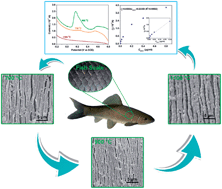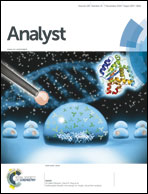Green electrochemical sensing platforms: utilizing hydroxyapatite derived from natural fish scales as a novel electrochemical material for the sensitive detection of kidney injury molecule 1 (KIM-1)†
Abstract
Urinary KIM-1 is an ideal biomarker for acute kidney injury diagnosis. The proof-of-concept is demonstrated by utilizing the hydroxyapatite derived from natural fish scales as an electrode material, where the sensing of KIM-1 is shown to be possible for the first time with a linear range from 0.01 to 0.20 μg mL−1 and a detection limit of 0.017 μg mL−1 under model conditions; proof-of-concept is demonstrated in spiked urine.


 Please wait while we load your content...
Please wait while we load your content...